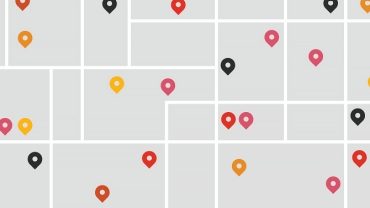
'Waiting times' in mental healthcare
The average waiting times for mental healthcare has been on the rise in recent years1. For many patient groups, the waiting times for registration can be as high as the waiting time for treatment itself, or even higher. This is particularly of concern, since many patient groups could be in high risk situations and lack the support necessary to get them urgent assistance. While this might be an issue of high demand for mental healthcare services, there are many interventions possible that can help reduce the waiting times.

Background
The long waiting times in mental health care have been one of the major challenges within current mental health care in the Netherlands for several years now. Since finding a solution for the reduction of waiting times is a complex issue, an approach incorporating different perspectives is needed. That is why, since 2018, four large mental healthcare institutions in collaboration with VGZ (one of the largest non-profit health insurers in the Netherlands) have joined forces to work together to find a solution to reduce the increasing waiting lists and waiting times in mental healthcare. In close collaboration with healthcare professionals from the field, initiatives have been developed, which primarily lead to higher quality of care and shorter waiting list as well as waiting times but also led to lower healthcare costs.

Initiative ‘Waiting list reduction’
Based on the results of various experiments, (at least) 23 good practical examples have been developed, that have led to a reduction in waiting times and waiting lists within the mental healthcare sector. Some of these initiatives are highlighted below:
- Waiting list guidance on the telephone
During a long waiting period, the situation of clients can change considerably (deteriorate or improve). Often, the care institutions are not aware of the latest state of affairs and urgent intervention opportunities might be missed. Additionally, this period is the source of concern and frustration to clients.
The idea: waiting list guidance. Clients who are on the waiting list of the outpatient clinic are supervised via telephone. They are in regular contact with a healthcare professional, who checks in on them regularly to see how they are doing. Urgent situations can be signalled during the telephone conversations, and it also helps to “clean-up” the waiting lists if patients are no longer waiting for actual treatment - Accelerated intake
The situation of crisis-prone clients with complex problems could be very unstable, especially during a period in which they are registered but have to wait for care. This can lead to crisis situations, aggravation of complaints, forced admissions and an even greater reliance on care.
The idea: accelerated intake, if necessary. Under this initiative, clients that have been referred are filtered on the basis of crisis sensitivity and complex problems, and such clients are offered an accelerated intake at specially reserved "accelerated intake" places, which ultimately has a positive impact on the waiting times for all clients, by taking out critical, complex cases and therefore preventing more complex care
- Recovery Supporting Intake
Regular intakes are insufficiently focused on the clients and their opportunities, strengths and system and environment. Apart from that, the intake mechanisms do not always consider the prognosis or ambition of the client.
The idea: Recovery Supporting Intake. This is a new form of the intake interview. In addition to a psychiatrist or clinical psychologist, a professional experience expert is also involved. The intake conversation is not so much aimed at making a traditional diagnosis, but more on the strength and capabilities of the client and what they need to work on their recovery. Taking this approach allows the care institutions to identify clients that need more specialised care, and ones whose issues can be handled at basis GGZ levels. This also means fewer crisis situations arise and ensures that fewer intensive specialist psychiatric care is needed. The waiting time for intake is therefore in some cases shortened on average from 10 to 2-4 weeks and for treatment from 6 to 0-4 weeks.
The SDoH approach does not stop at one project – sharing learnings, fine-tuning and redeploying them are also an essential part of the process – step 5
Overall, the three examples illustrated above have all yielded great results. However, their impact will only be magnified if they are used across organisations. In order to continue sharing these examples for adoption by other mental healthcare institutions, details on these 23 initiatives have been collected in a book, which has also been presented to the State Secretary of the Ministry of Health, Welfare and Sport)2.
Contact us




















